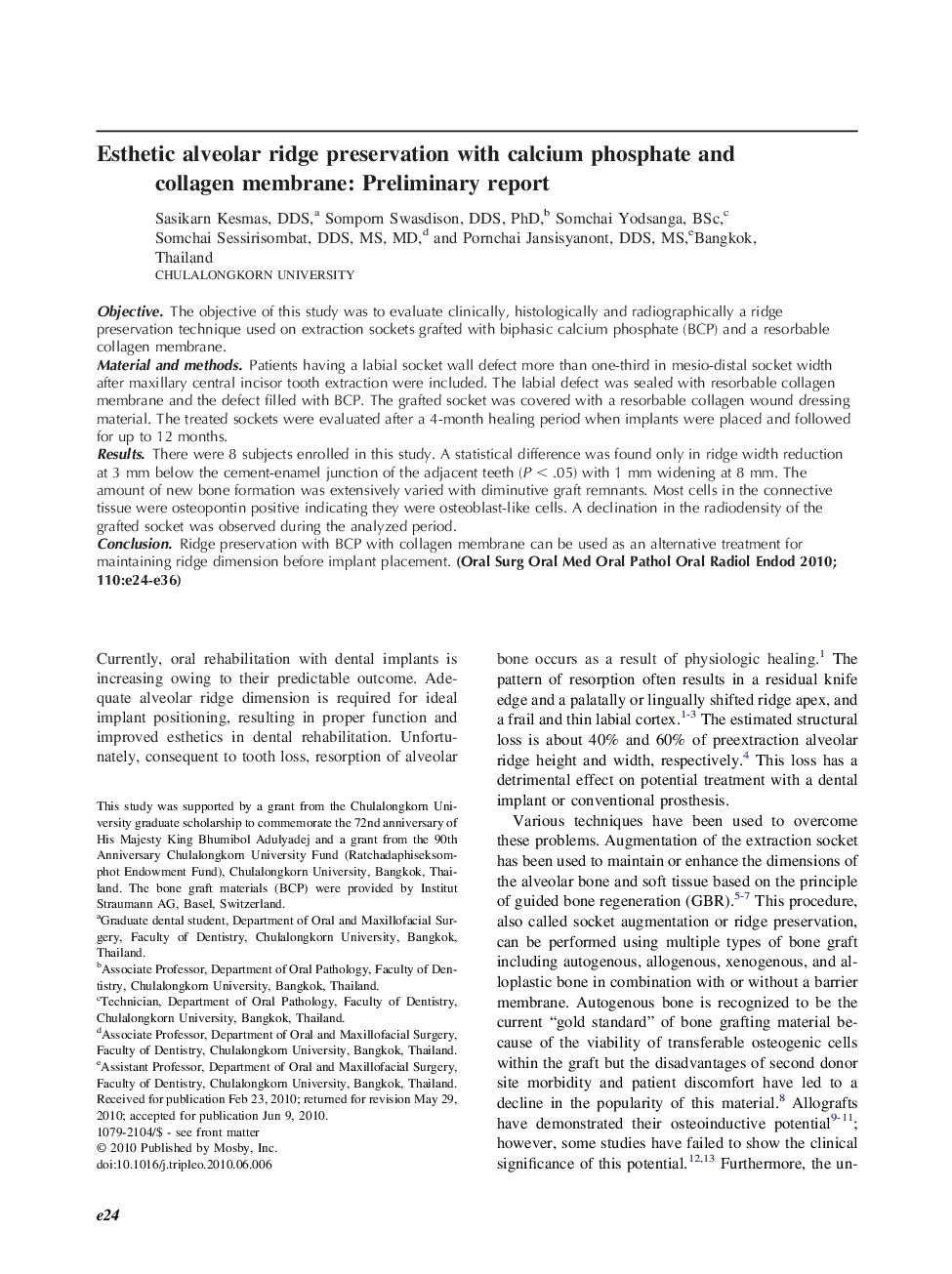| Article ID | Journal | Published Year | Pages | File Type |
|---|---|---|---|---|
| 3167455 | Oral Surgery, Oral Medicine, Oral Pathology, Oral Radiology, and Endodontology | 2010 | 13 Pages |
ObjectiveThe objective of this study was to evaluate clinically, histologically and radiographically a ridge preservation technique used on extraction sockets grafted with biphasic calcium phosphate (BCP) and a resorbable collagen membrane.Material and methodsPatients having a labial socket wall defect more than one-third in mesio-distal socket width after maxillary central incisor tooth extraction were included. The labial defect was sealed with resorbable collagen membrane and the defect filled with BCP. The grafted socket was covered with a resorbable collagen wound dressing material. The treated sockets were evaluated after a 4-month healing period when implants were placed and followed for up to 12 months.ResultsThere were 8 subjects enrolled in this study. A statistical difference was found only in ridge width reduction at 3 mm below the cement-enamel junction of the adjacent teeth (P < .05) with 1 mm widening at 8 mm. The amount of new bone formation was extensively varied with diminutive graft remnants. Most cells in the connective tissue were osteopontin positive indicating they were osteoblast-like cells. A declination in the radiodensity of the grafted socket was observed during the analyzed period.ConclusionRidge preservation with BCP with collagen membrane can be used as an alternative treatment for maintaining ridge dimension before implant placement.
